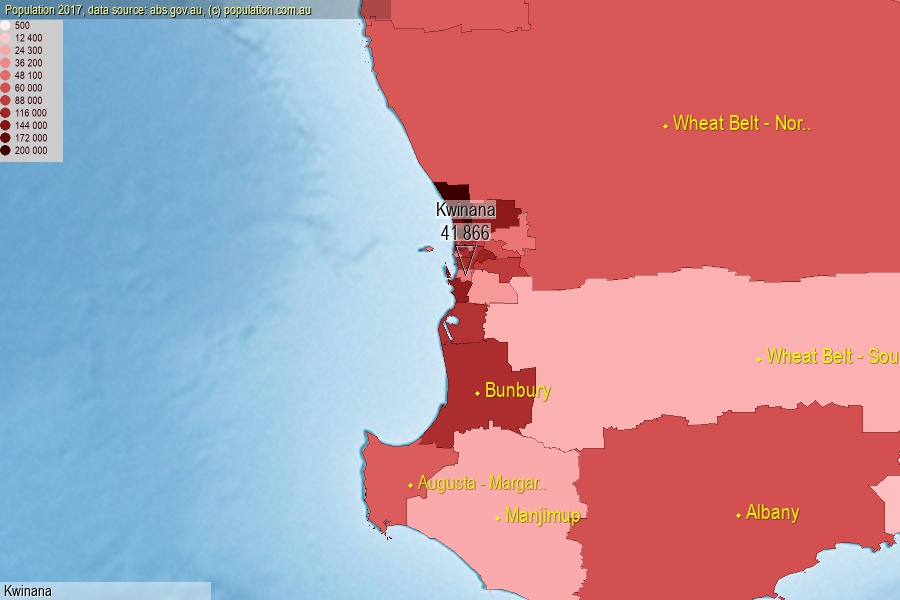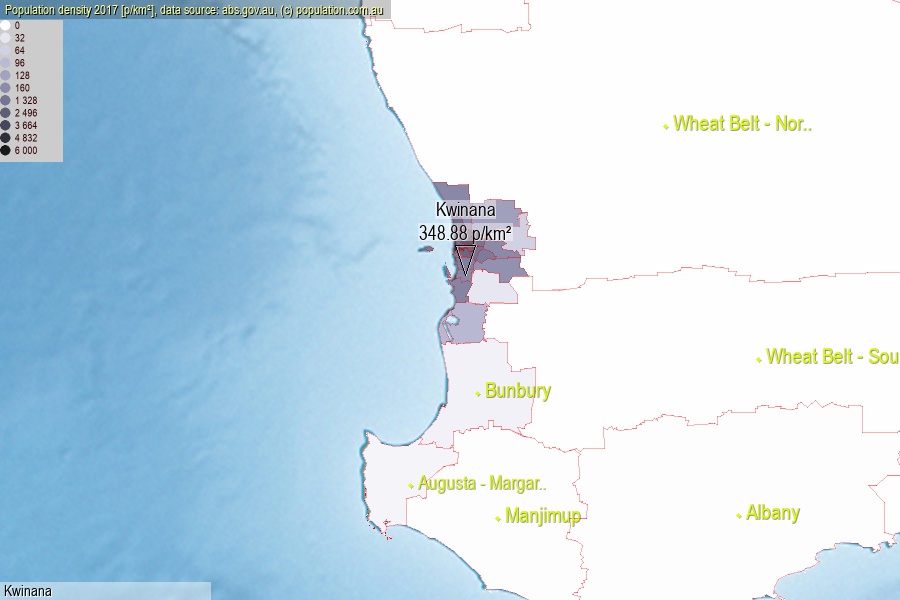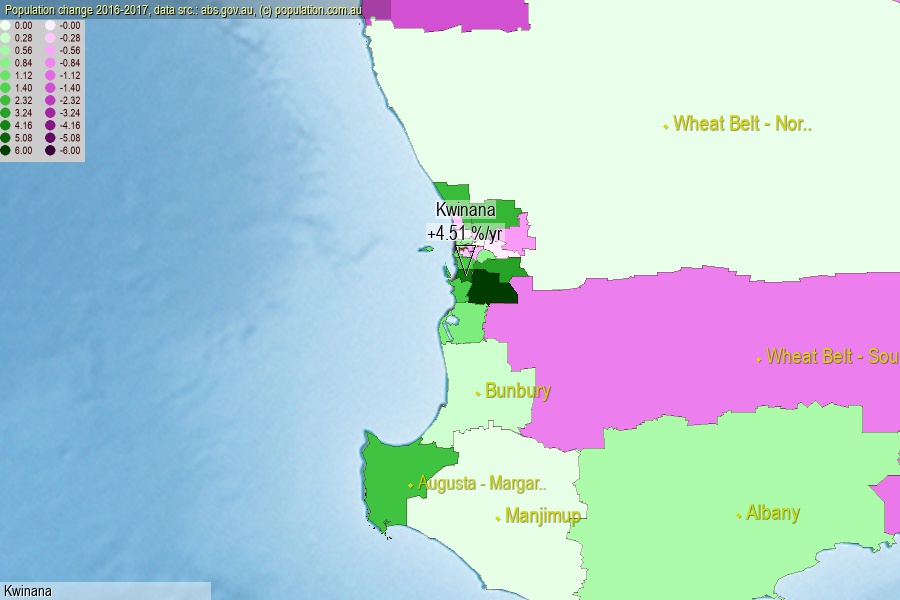 population.com.au
population.com.auLast official estimated population of Kwinana (as Statistical Area Level 3) was 41 866 people (on 2017-06-30)[2]. This was 0.17% of total Australian population and 1.615% of WA population. Area of Kwinana is 120.00 km², in this year population density was 348.88 p/km² . If population growth rate would be same as in period 2016-2017 (+4.51%/yr), Kwinana population in 2025 would be 59 599. [0]



Click to enlarge. Kwinana is located in the center of the images.
Population [people], population density [p./km²] and population change [%/year] [2]
View borders » (new window) [4]
[1991-1992] +2.52 %/Y
[1992-1993] +2.74 %/Y
[1993-1994] +3.04 %/Y
[1994-1995] +2.65 %/Y
[1995-1996] +1.38 %/Y
[1996-1997] +1.99 %/Y
[1997-1998] +1.83 %/Y
[1998-1999] +1.72 %/Y
[1999-2000] +1.62 %/Y
[2000-2001] +0.86 %/Y
[2001-2002] +1.09 %/Y
[2002-2003] +1.62 %/Y
[2003-2004] +0.85 %/Y
[2004-2005] +2.04 %/Y
[2005-2006] +4.05 %/Y
[2006-2007] +4.06 %/Y
[2007-2008] +6.10 %/Y
[2008-2009] +5.91 %/Y
[2009-2010] +3.87 %/Y
[2010-2011] +5.37 %/Y
[2011-2012] +6.49 %/Y
[2012-2013] +6.18 %/Y
[2013-2014] +5.00 %/Y
[2014-2015] +4.69 %/Y
[2015-2016] +4.99 %/Y
[2016-2017] +4.51 %/Y
[0] Calculated with linear interpolation from officially estimated population
[1] Read more about SA3 and Australian Statistical Geography Standard (ASGS) on abs.gov.au
[2] Population data from Australian Bureau of Statistics (Population and density: 2017; change: 2016-2017)
[3] Digital Boundaries: Australian Statistical Geography Standard (ASGS) 2016.
[4] Border coordinates are simplifyed using Ramer-Douglas-Peucker algorithm.